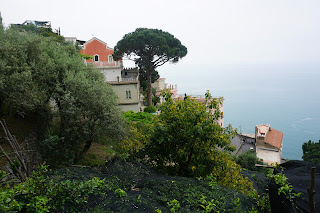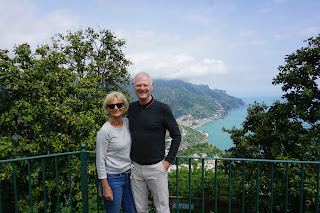Ostuni - "The White Town"
We are off to visit a hilltop town still fortified by its ancient walls. Ostuni, meaning "new town" in Greek was founded in the 7th century BC. It was reputed to have been totally destroyed by Hannibal during the Punic Wars and then rebuilt by the Greeks and the name they gave it stuck. Ostuni is commonly referred to as "the White Town" for its white limestone covered fortified walls and buildings. The white lime was added to keep the buildings cool, to act as a disinfectant against disease and because it was widely available in the area. Today Ostuni is a major tourist town and its population increases from 32,000 to over 100,000 in summer. Thankfully, we are here before the hordes descend on this very pretty town.
The White Town of Ostuni sits atop of three hills 229 meters above the sea which is 6km away.
The massive fortified walls that still surround the town were built between the 13th and 16th centuries. What we see here was built in 1506.
The Piazza Liberta (Liberty) is just outside the old town and houses many cafes and restaurants but the main attractions are the Church of San Francesco d'Assisi (on the right), which was consecrated in 1304 and went through a major renovation after the 1743 earthquake as well as the attached Town Hall which used to be the Francescan Convent from 1304 - 1809. Following the suppression of religious orders in 1813 the building was purchased by the town who made major renovations to the building including the redesign of the front in a neoclassical style. In 1887 the convent officially became the Town Hall.
Arches were built over the streets to keep the buildings from collapsing
Cathedral of Ostuni was finished in 1495 in a Gothic style. The ceiling of the Nave has three paintings depicting the life of Jesus from the 18th century
The massive fortified walls that still surround the town were built between the 13th and 16th centuries. What we see here was built in 1506.
Arches were built over the streets to keep the buildings from collapsing
Cathedral of Ostuni was finished in 1495 in a Gothic style. The ceiling of the Nave has three paintings depicting the life of Jesus from the 18th century









Comments
Post a Comment